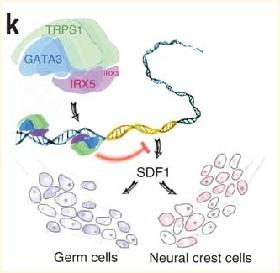River subbasins more depleted than
official figures show
09 April 2024
Published online 14 May 2012

Mutations in a single gene are responsible for a complex disorder characterized by abnormal development of the face, brain, blood, heart, bone and gonads, according to research published today in Nature Genetics.
First described in 2007 by Hanan Hamamy, a council member of the Centre for Arab Genomic Studies (CAGS), Hamamy Syndrome is a congenital condition marked by wide-set eyes, unusually protruding ears and a flat head. These craniofacial defects are accompanied by mild to moderate hearing loss, borderline intelligence, sloping shoulders and brittle bones.
A research team led by Bruno Reversade of the Agency for Science, Technology and Research (A *STAR) in Singapore, and including Osama Ababneh of the University of Jordan, Amman, analyzed DNA from two consanguineous families from Jordan and Turkey.
They identified point mutations in five sufferers of the condition in both copies of their Iroquois-5 (IRX5) gene. IRX5 is one of several dozen master genes that control patterning and body plan formation during embryonic development in all multicellular organisms.
By using small RNA molecules called morpholinos, the researchers knocked down the expression of IRX5 in Xenopus frog embryos during the earliest stages of neural development.
The embryos exhibited the same anatomical defects seen in humans with Hamamy Syndrome. The syndrome occurs as a result of impaired migration of neural crest cells, which normally migrate away from the nervous system early in development to form other tissues such as the bone and cartilage in the face.
The researchers found that by reducing the expression of IRX5, the morpholino-treated embryos had a nearly 20-fold increase in expression of the Sdf1 gene, which encodes a small signaling molecule that is essential for the migration of neural crest cells in the skull.
Thus, IRX5 controls craniofacial development by inhibiting Sfd1 expression. "We are positive that this discovery could open up new therapeutic solutions to common diseases such osteoporosis, heart disease and anaemia, which affect millions of people worldwide," says Reversade.
doi:10.1038/nmiddleeast.2012.74
Stay connected: